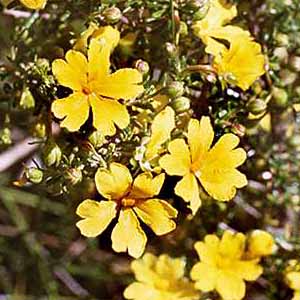
The Plumbaginaceae are a small group of caryophyllid
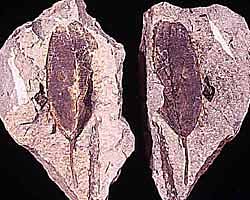 |
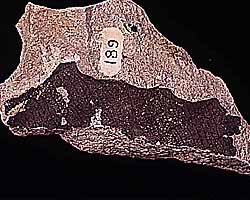 |
Dillenites : At left is Dillenites cleburni (UCMP 2534), from the Cretaceous of Wyoming. At right is another leaf assigned to Dillenites from the Oligocene of Oregon, USA (UCMP 189).
The Plumbaginaceae are mostly herbs and small shrubby plants. Many species have all or most of their leaves clustered at the base of the plant, and these leaves have chalk-glands. The glands are a key feature that allows members of the family to live in salty soilswhere most other species of plants cannot. The chalk-glands excrete calcareous salts dissolved in the water of the plant's tissues. This excretion moves the salts out of the plant where they may crystallize or be washed away.
The flowers have five petals, five stamens, and five sepals that may be colorful and showy like the petals, but which are often thin and papery. The flowers may be pink or blue, and are usually clustered together. Unlike most members of the family, the flowers of Plumbago often have the bases of the petals fused together into a long tube, but with the five petal tips separate. This floral shape, and the blue color, are typical characteristics of flowers that are attractive to butterflies.
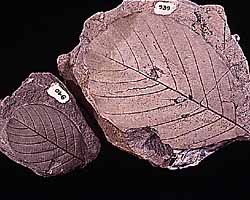 |
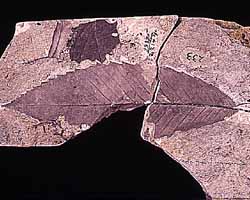 |
Dilleniaceae Fossils of the Oligocene : At left, Davilla intermedia, from the Oligocene of California (UCMP 939 & 940). At right, Tetracera oregona from Oregon (UCMP 233). Both fossils are type specimens in the UCMP paleobotanical collection.
Fossils of the Plumbaginaceae are not common, but pollen from both subfamilies is known from the Miocene. Fossil pollen that resembles pollen of living Aegialitis and Plumbago (both in subfamily Plambagoideae) has been reported from the Upper and Middle Miocene of Borneo, respectively. Fossil pollen comparable to either living Armeria or Limonium is known from the Upper Miocene of Spain. While the Plumbaginaceae fossil record extends only back to the Miocene, that of their sister group, the Polygonaceae extends back as least as far as the Paleocene. See Muller (1981) for more information.
color produced by the calcareous salty coating the chalk glands exude. If someone out there knows the story behind the name Plumbago and Plumbaginaceae, please do let us know!

Sources:
Jan Muller, 1981. Fossil pollen records of extant angiosperms. The Botanical Review 47(1):1-142.

